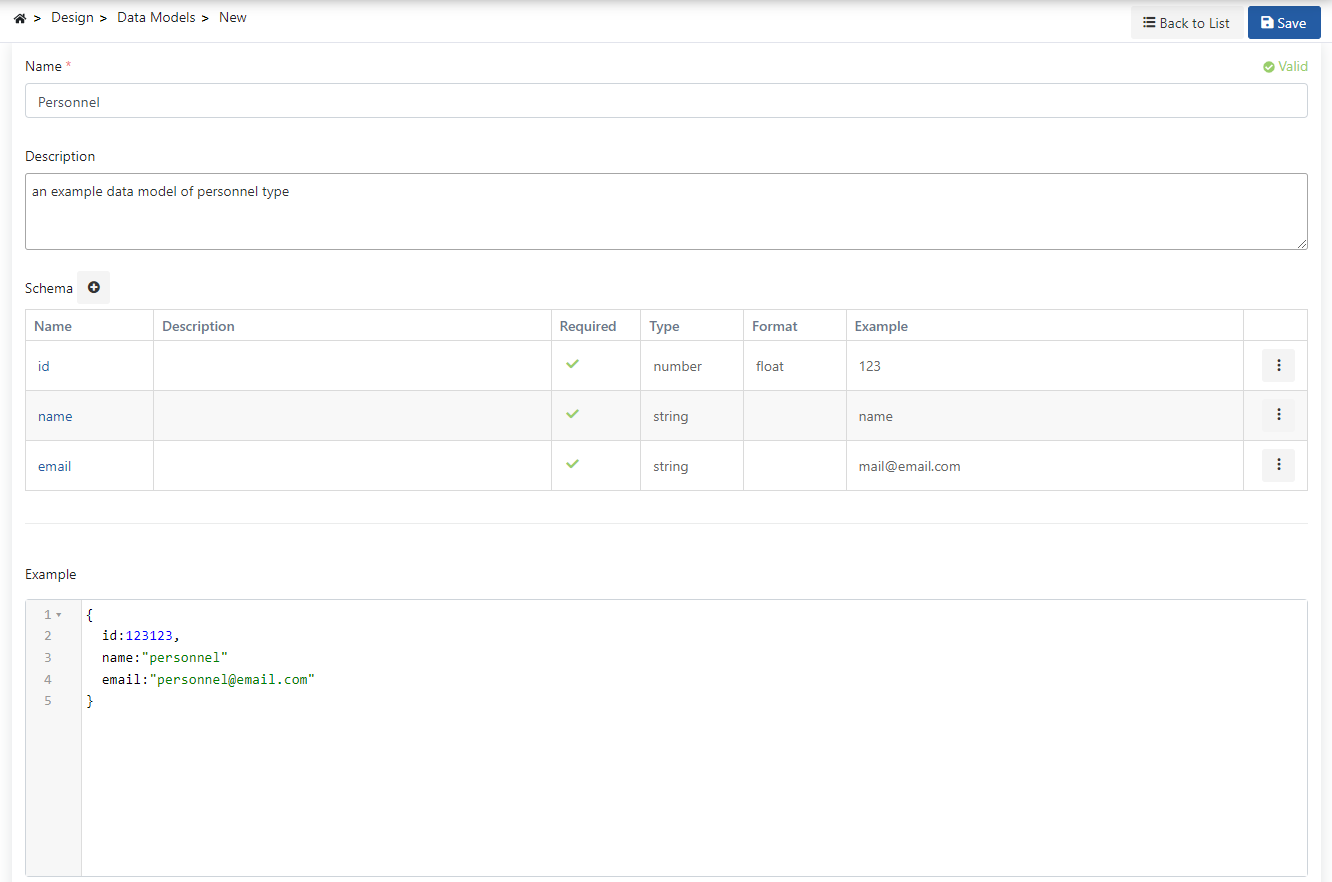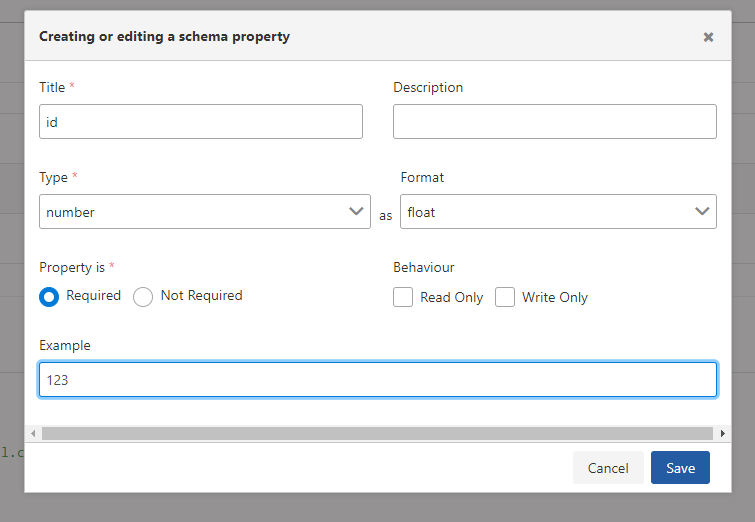Data Models
The Common Query Model is metadata information that describes what type of data is in the message (usually the body part).
Additionally, the model created here can be imported and used in the Spec Design Editor.
Creating a Common Data Model
A new Data Model can be created by clicking the Create button at the top right of the list interface.

The picture below shows the Common Data Model creating settings:

The fields used for the common query model creation configuration are shown in the table below.
| Field | Description |
|---|---|
Name | The name information of the query model. |
Description | Description of the query model. Entry is optional. |
Schema | It is the field where the schema that specifies which type the data will be entered is entered. |
Example | Can create an instance of the data type. |
The picture below shows the schema creation settings:

The fields used for schema creation configuration are shown in the table below.
| Field | Description |
|---|---|
Name | The name of the schema. |
Description | The schema can be explained. |
Type | Specifies the type of the schema. |
| Format | It is a field that is activated according to the selected type. For some types there are formats to choose from:
|
| $Ref Target | If $ref is selected from the type field, this field becomes active. Another query model can be referenced. |
Property is | Specifies whether the model is mandatory or not. |
Behaviour | Only read/write information of the schema is determined. |
| Integer Properties | If Integer is selected as the type, these fields are active:
|
| String Properties | If String is selected as the type, these fields are active:
|
| Enum Values | If Enum is selected as the type, this field becomes active. This is the field where the possible values of the model are entered. |
Example | An example can be given describing the schema. |